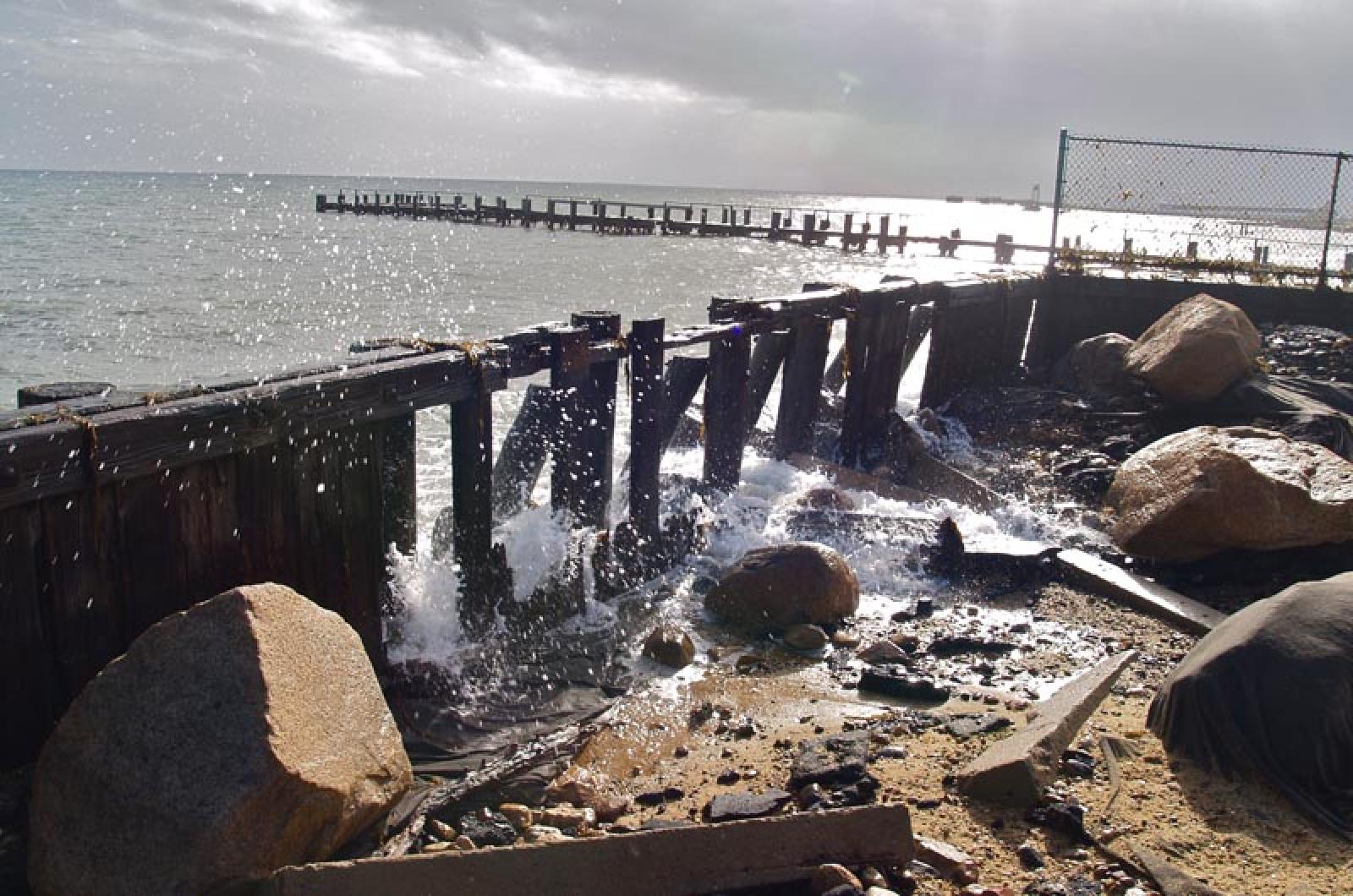Oct. 29 marks the one-year anniversary of Superstorm Sandy. Had she headed 200 miles farther north of her Atlantic City-area landfall and then taken a left, we’d still be dealing with the havoc left in her wake. The cost of the largest Atlantic hurricane ever was the tragic loss of 159 human lives and $68 billion in damage. Sandy was not so much an environmental disaster as she was a public safety and economic one. Add in the droughts, heat waves, storms, tornadoes, floods, hurricanes and wildfires of 2012, and according to the National Oceanic and Atmospheric Administration’s National Climatic Data Center, the total cost to America was a staggering $120 billion.
Experts predict 10 Sandy-like storms by the end of the century and chances are the Bay State will be slammed by at least one. The Cambridge-based Union of Concerned Scientists forecasts that Boston should expect today’s once-a-century coastal impacts to become once-a-year outcomes during that same time period. With flooding from a superstorm like Sandy, The Boston Harbor Association predicts that almost half of Boston and its neighborhoods would be flooded with waves knocking at city hall’s doors. Further, the international economic think tank, The Organisation for Economic Co-operation and Development, recently cited Boston eighth among the world’s major cities most threatened by flooding due to sea-level rise.
The prevailing view among meteorologists is that superstorms are the product of climate change and the attendant hotter and higher oceans that energize such storms. At its annual meeting in Boston this year, the American Association for the Advancement of Science agreed that climate change is producing extreme weather. We’re experiencing weather on steroids and we have to prepare for its uncertain and possible catastrophic effects.
Be it increased sea level rise and coastal erosion, more frequent and severe droughts and flooding, or just plain weird weather, it’s time to plan for what was previously the unexpected and manage what is now the unavoidable. Since Sandy, our conversations about climate change have themselves changed. The current challenge is not so much about saving the planet from heat-trapping gases as it is about saving us from a warming planet. It’s not throwing in the towel but rather facing the realities of living with, coping with, and adapting to the effects of global warming caused by emissions from fossil fuel-burning power plants and motor vehicles.
With so much carbon pollution already in the air and our traditional fossil fuel energy production and use patterns locked in, we have no choice but to live with its consequences.
Sure, we need to continue to reduce air pollution and build renewable energy projects using the sun, wind, and tides. And we need to continue to increase energy efficiencies in cars, trucks, utilities, and appliances. But we also need to do both: mitigate the effects of climate change and adapt to them.
At its outer edges, Sandy was more than a thousand miles wide. Today, 85 per cent of 6.7 million residents in Massachusetts live within 50 miles of the coast. We are vulnerable and we need a plan — a comprehensive adaptation management plan that will show us how to lessen storm impacts to our built and natural environment and then demonstrate how to use both to protect us.
Specifically, we need a plan that assesses the vulnerability of the commonwealth’s electrical grid, buildings, roads, airports, dams, water supplies, and sewage treatment plants and then recommends how to strengthen them.
We need a plan that recognizes the protective value of our beaches and wetlands, forests and rivers, and then explains how to use their natural resiliencies to buffer people from the disastrous impacts of stronger, more frequent storms.
Finally, we need a plan that identifies our most vulnerable human populations and determines how best to insulate them from the near-certain ravages of superstorms.
Last summer, President Obama said: “Those who are already feeling the effects of climate change don’t have time to deny it — they’re busy dealing with it.” It’s now time for Massachusetts to deal with it and prepare a comprehensive adaptation management plan that guides us in living with the effects and unpredictability of an ever-warming planet.
Jack Clarke is director of public policy and government relations for Mass Audubon.







Comments (1)
Comments
Comment policy »